Essence of Shrimad Bhagavad Gita
Bhagavad Gita is a revered scripture in Hinduism. It contains 18 chapters and seven hundred verses. However, the essence of Bhagavad Gita can be understood even without reading the whole scripture. The following article attempts to explain Bhagavad Gita, in essence, in simple language.
To understand the most significant element of Bhagavad Gita i.e. the essence of this holy scripture, one needs to first of all know who are the main characters in this dialogue.
Three Characters in Bhagavad Gita
Bhagavad Gita is a dialogue between Arjun and Shri Krishna and therefore these two are the obvious characters. Sanjaya is narrating the interchange to Dhritrashtra and there are a couple of verses attributed to Sanjaya. However, there is a third central player in the conversation who remains hidden throughout the discourse. He reveals his identity to Arjun in Chapter 11 (more on this later). His name is Brahm (ब्रह्म) or Kaal.
So, in essence there are 3 main characters in Bhagavad Gita which are as follows.
- Arjun
- Shri Krishna
- Kaal (Brahm)
What is the most common mistake people make when understanding or reading Bhagavad Gita?
Everyone who has heard about Bhagavad Gita has one notion in their mind. A very common statement in Hinduism is "Krishnastu Bhagwan Svayam" They all believe that the Supreme God in Bhagavad Gita is Shri Krishna. So they start with this presumption that Shri Krishna is the Supreme God. In fact, the so called scholars who know Bhagavad Gita by heart also have the same fallacy. This is the biggest mistake people make when grasping the core message of Bhagavad Gita. If one tries to comprehend Bhagavad Gita while considering Shri Krishna to be the Supreme Deity, they continue to have doubts and cannot understand the essence, the central idea of Bhagavad Gita.
So the first principle of understanding Bhagavad Gita is to start with an unbiased mind. At least start with a notion that Shri Krishan is not the Supreme God in Bhagavad Gita. You can question and reason this notion as you progress reading Bhagavad Gita.
Who is Brahm or Kaal
In short, Brahm or Kaal is the knowledge giver of Bhagavad Gita. He is the one who spoke Bhagavad Gita through Shri Krishan. However, it is imperative to understand the difference between 3 following terms first.
- Brahm (ब्रह्म) – also known as Kaal or Kshar Purush in Bhagavad Gita. He is the speaker of Gita.
- ParBrahm – also known as Akshar Brahm or Akshar Purush (this God is bigger than Brahm)
- Purna Brahm – i.e. Supreme God. Also known as 'Param Akshar Purush' or 'Param Akshar Brahm', 'Sarvgatam Brahm', 'Sachidanand Ghan Brahm' or Sat Purush. (this God is bigger than ParBrahm)
The above three terms appear at various places throughout Bhagavad Gita. There are 3 more similar sounding words which are as follows. Having some knowledge and distinction between the three is helpful.
- Brahm (ब्रह्म) - This is the same Kaal described above.
- Brahman (ब्रह्मन्) - This word is used to address a God bigger than Brahm. In most contexts this is synonymous with Supreme God.
- Brahma (ब्रह्मा) - One of the Gods of trinity in Hinduism. Brother of Vishnu and Shiv.
Now please read 11.32 where the knowledge giver god of Bhagavad Gita claims to be Kaal.
11.32
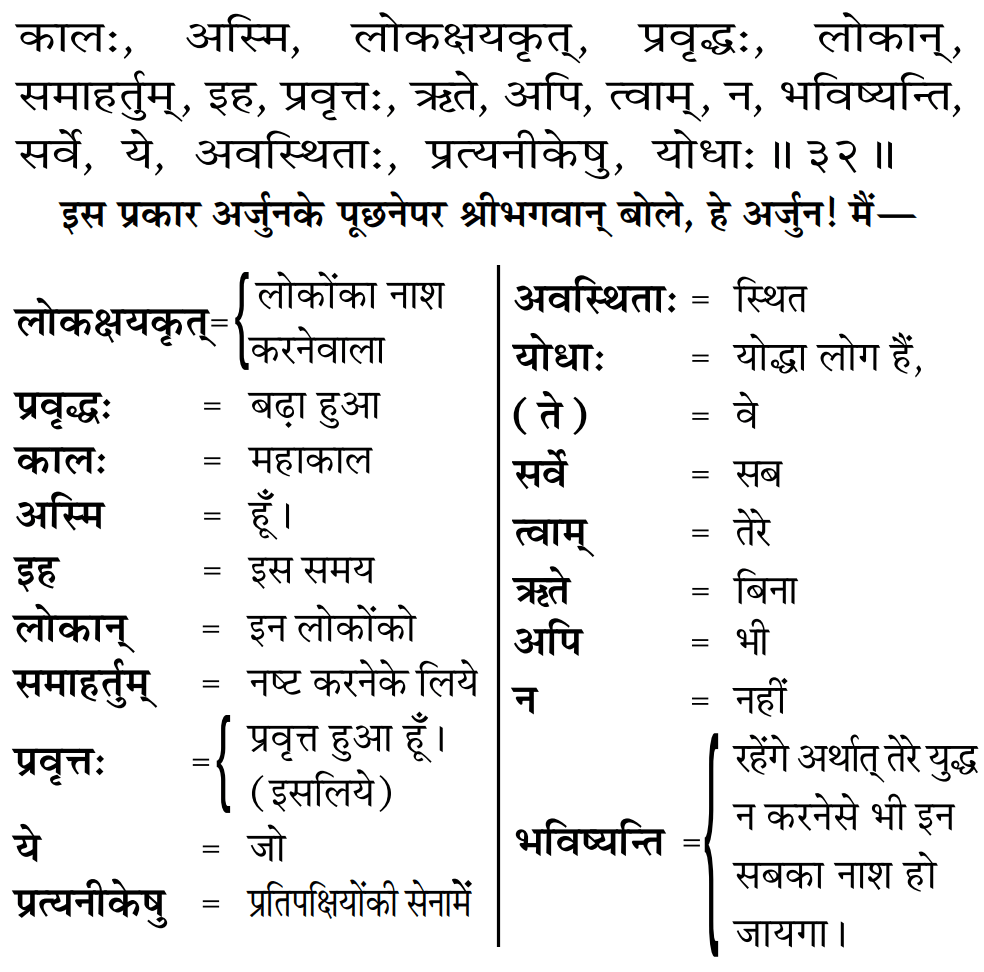
Translation: I am the enlarged Kaal, the destroyer of the worlds. This time I have appeared to destroy these worlds; therefore, all the warriors who are situated in the opposite army will not survive even without you i.e. even if you do not fight, they all will be destroyed.
The above verse 11.32 clarifies two things
- The name of knowledge giver god of Bhagavad Gita is Kaal.
- Kaal clarifies that he has appeared. Shri Krishan was already present there but Kaal had appeared at the time of battle of Mahabharata and entered into Shri Krishan's body and then gave the knowledge of Bhagavad Gita.
Knowledge Giver of Bhagavad Gita talks about some other Supreme God
Now that you have the understanding of the above mentioned terms, the following verses will intrigue you and also make sense at the same time.
Gita 18.62
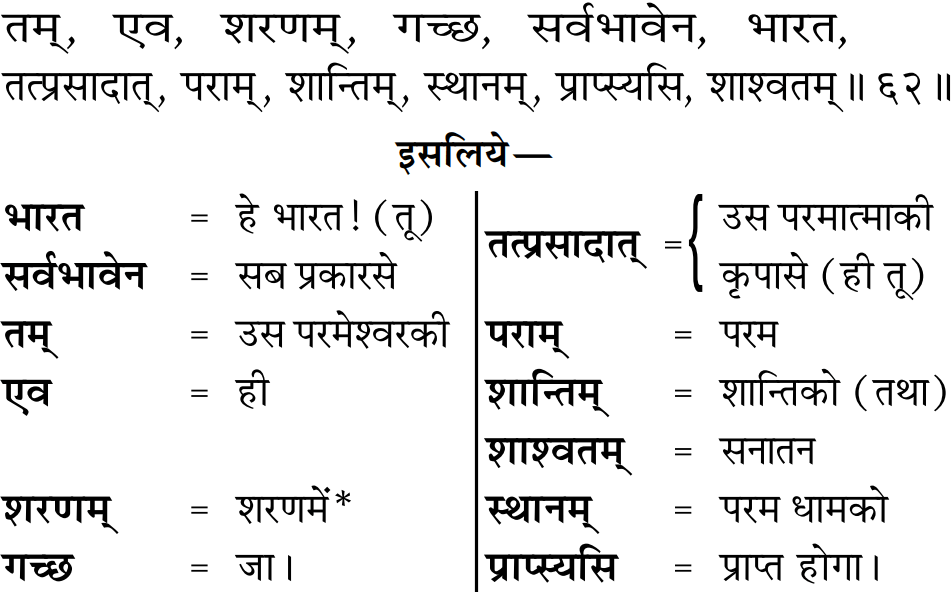
Translation: O Bharat! You, in every respect, go in the refuge of only that Supreme God. By the grace of that Supreme God only, you will attain the supreme peace and the everlasting place (dhaam/lok) i.e. Satlok.
It is very obvious from the above verse that the knowledge giver of Bhagavad Gita is asking Arjun to go to some other Supreme God who can grant him supreme peace and an eternal place. Read more on 18.62.
Gita 15.4
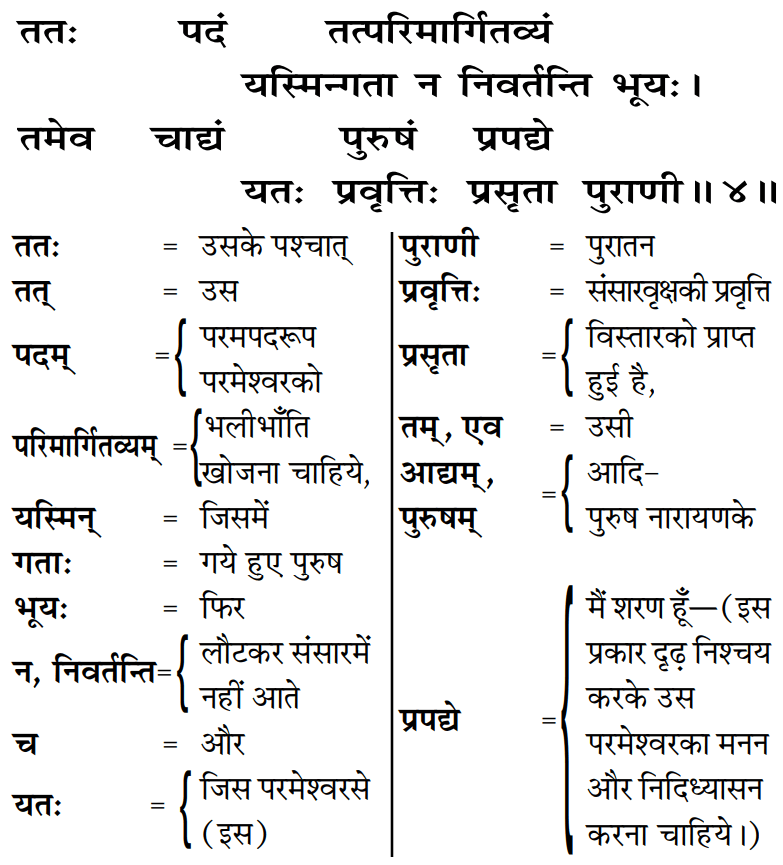
Translation: {When one finds the Tatvdarshi saint mentioned in Bhagavad Gita Chapter 4 Verse 34, Gita Chapter 15 Verse 1} after that one should properly search for the supreme place i.e. Satlok of that Supreme God. Having gone where, devotees do not return to the world, and the Param Akshar Brahm, from whom the ancient creation–nature has originated. I also am in the refuge of that Eternal Purna Parmatma. One should only do bhajan of that Supreme God with full determination.
Again it is very obvious that the knowledge giver of Bhagavad Gita is taking about some other God. You can read more on 15.4.
It is thus clear that the speaker or Bhagavad Gita definitely talks about some other God apart from himself. There are many more verses which second this, but it is sufficient to cause an inquisitiveness. You can read 15.16-17, 18.66, 8.8-10 or Read Supreme God in Bhagavad Gita.
Let us discuss another point. The knowledge giver of Bhagavad Gita claims to be in birth and death.
God Speaking Bhagavad Gita is in Birth & Death
To further explore this misconception about the speaker of Bhagavad Gita being the Supreme God, lets us look at another verse where the God speaking Bhagavad Gita clearly tells Arjun that he too is in the cycle of birth and death. This is another evidence that proves that he is not supreme.
Please read the following verse.
Gita 4.5
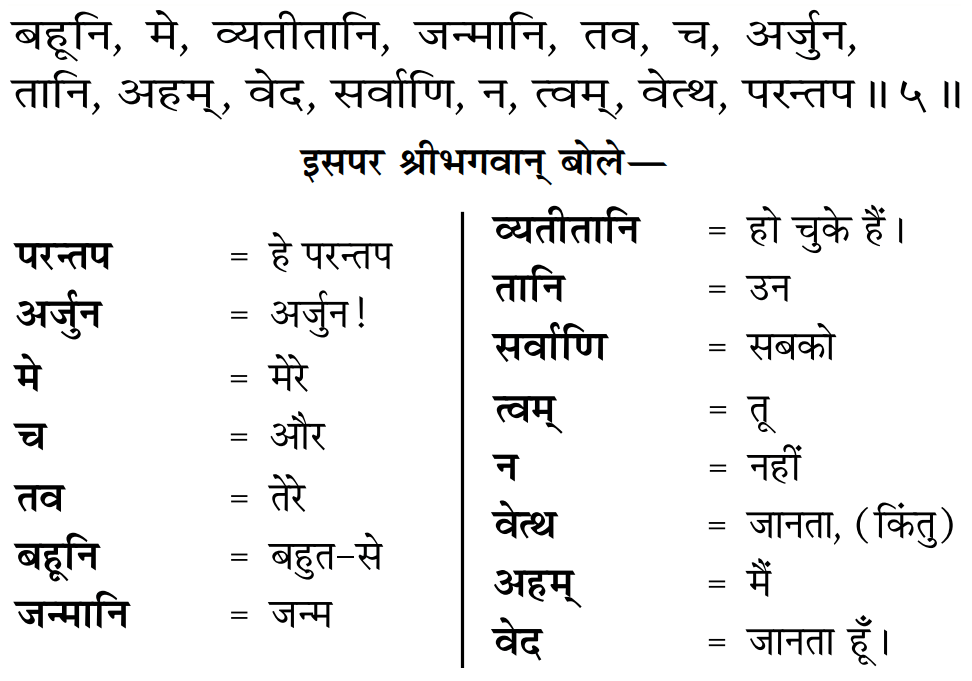
Gita 4.5: Oh Parantap Arjun! You and I have had several births. You do not know all of them but I know.
Brahm, the speaker of Gita says that he is in Birth and death. He further clarifies in Gita 5.9 that his births are divine. However, it clears the point that he is in the cycle of birth and death.
Let us look at another verse.
Gita 2.12
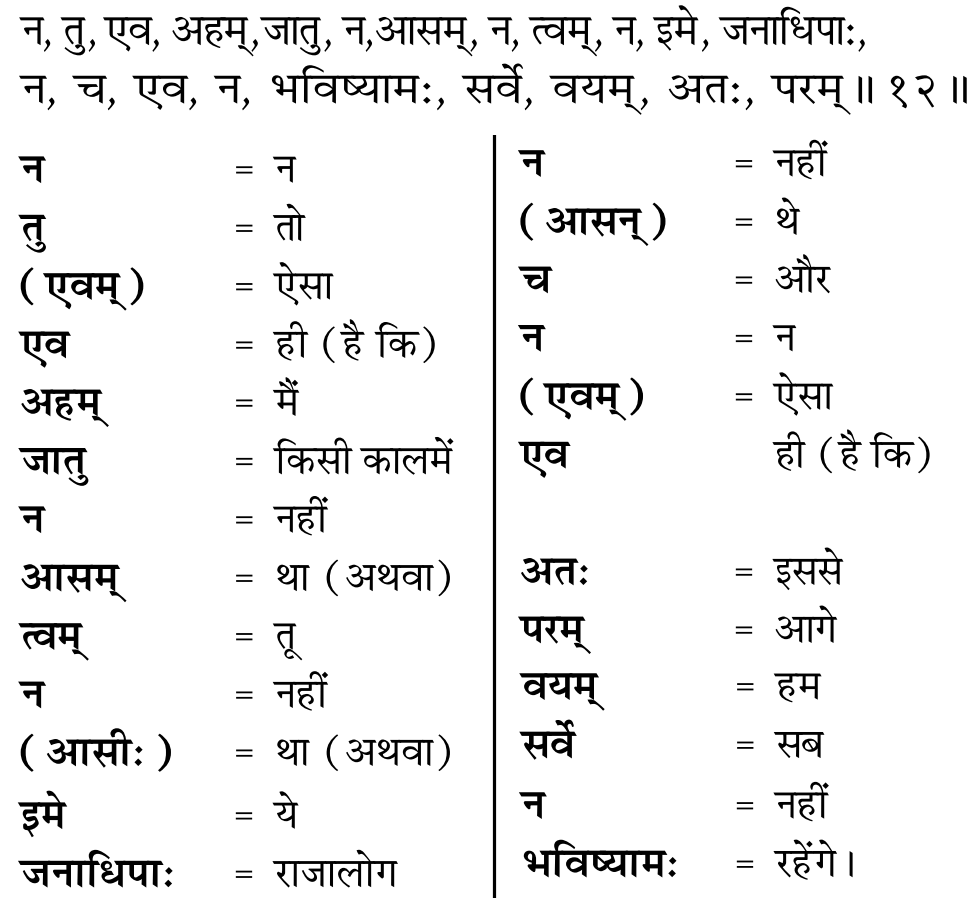
Translation: Neither it is that I was not there at any time or you were not there or these kings were not there, and nor it is that we will not be there beyond this.
It stands proved that the God speaking Bhagavad Gita is in Birth and Death. He solidifies this claim by further elaborating & explaining about the Immortal God in Gita 2.17. Please read this verse below.
Gita 2.17
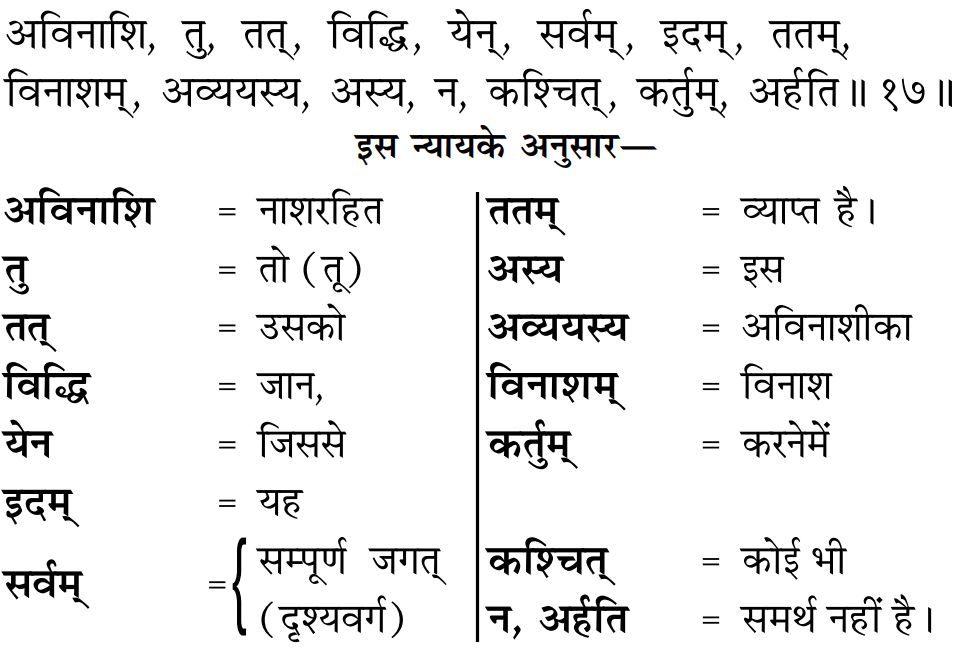
Translation: You should know Him to be indestructible/immortal from whom this whole visible world has pervaded. No one is capable of destroying this Immortal God.
The verses so far have proved the following
- The knowledge giver God of Bhagavad Gita is in the cycle of birth and death and therefore not supreme.
- There is some other God who in reality is Immortal and Supreme. This God is separate to the God speaking Bhagavad Gita.
Mantras: Om & Om Tat Sat in Bhagavad Gita
There are two separate verses in Bhagavad Gita where the speaker of Bhagavad Gita again creates a distinction between himself and the other Supreme God, on this occasion by creating a distinction between the naam mantras. Please read 8.13 first and then 17.23.
Gita 8.12 - 13
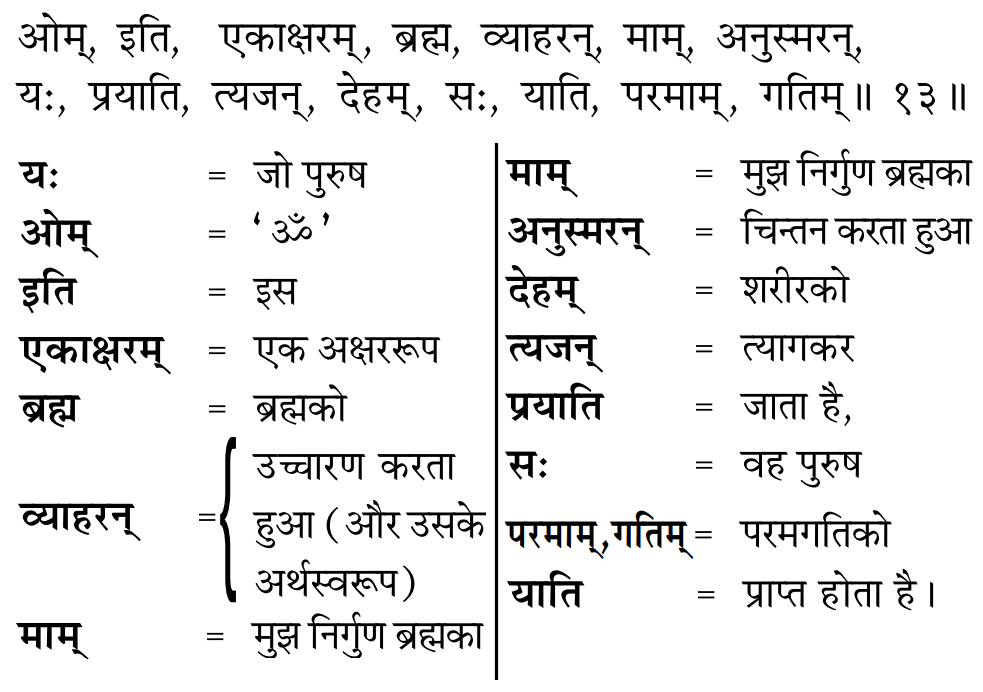
Meaning: Kaal God is saying that there is only one word Om/ॐ for me i.e. Brahm, which has to be chanted for doing sumiran. A devotee who while doing sumiran-sadhna unto last breath, gives up his body, he attains the supreme state i.e. salvation. {Brahm has called his salvation as (anuttamam’) very inferior/very bad in Gita Chapter 7 Verse 18.
In summary, in Gita 8.13 the speaker of Gita is saying that the mantra to worship him is 'OM' (ॐ).
Now read Gita 17.23.
Gita 17.23
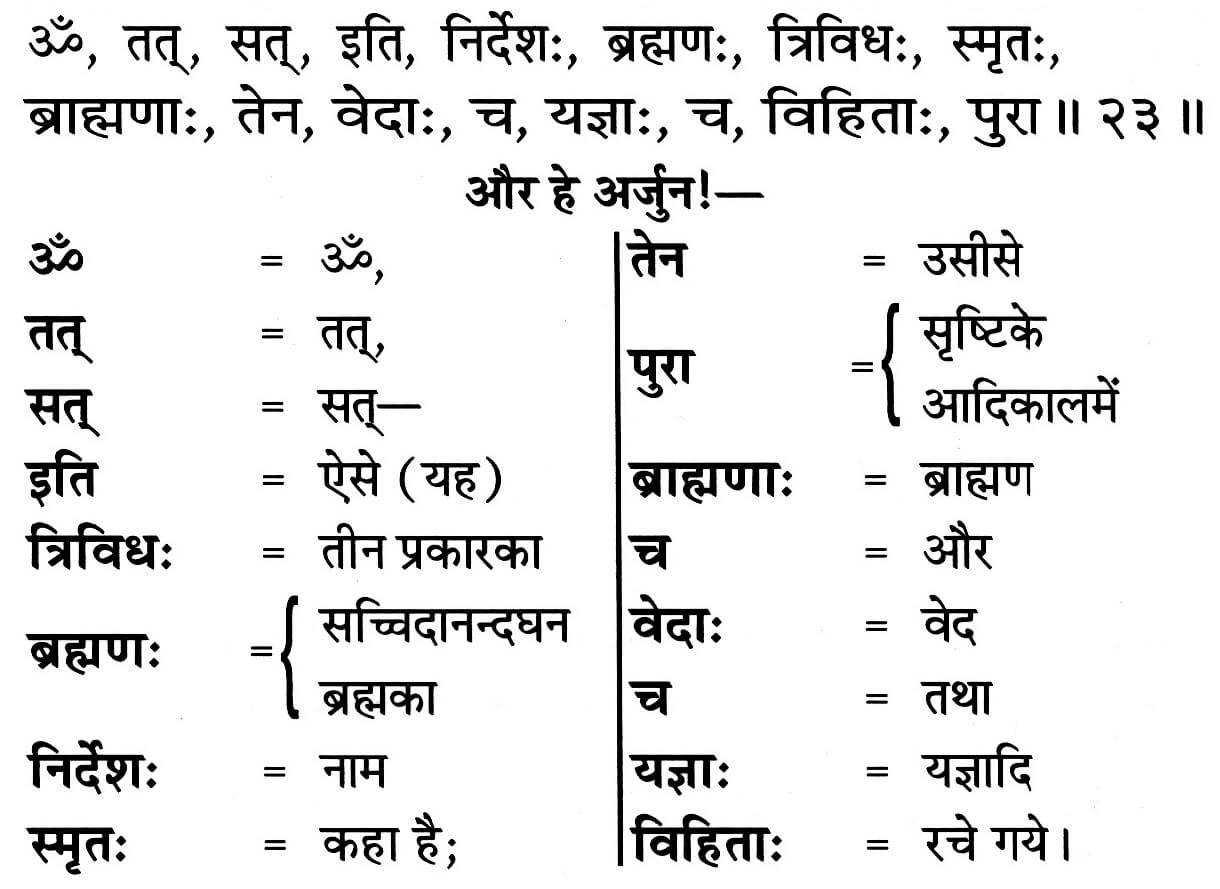
Translation: ॐ/Om’ mantra of Brahm, Tat’ - this is coded mantra of ParBrahm, Sat’ - this is coded mantra of Purna Brahm. In this way, there is direction of remembrance of three types of mantras of Purna Parmatma (Supreme God), and in the beginning of nature, based on that very Tatvgyan, the scholars created Vedas and yagya etc. They used to worship according to that.
In this mantra, the narrator of Gita says that the mantra of Supreme God is Om Tat Sat
In a nutshell, in this Gita 17.23, the speaker of Gita i.e. Brahm is talking about a God bigger than him whom he has addressed as 'Brahman (ब्रह्मन्)' and has clarified that the mantra for worship of this bigger God is 'Om Tat Sat'.
As we can see from the above verses there is a clear distinction between two Gods here in Bhagavad Gita. This again proves that the speaker of Bhagavad Gita is not the Supreme God.
Who gave the Knowledge of Bhagavad Gita
Gita 11.47 clarifies who spoke Bhagavad Gita.
What is the Message of Bhagavad Gita
Worship of the three gunas has been declared futile.
Birth and Death does not end by worshipping Kaal. Salvation provided by kaal is of a very poor quality.
Supreme God is someone else who nurtures and sustains everyone.
Arbitrary worship is useless and a cause of decline.
Conclusion
- The knowledge giver God of Bhagavad Gita is in birth and death.
- Worship of the three gunas (Brahma, Vishnu and Shiva) and lower gods cannot lead to salvation.
- Arbitrary worship based on whims (ancestor worship, pilgrimages, keeping fasts etc) is fruitless.
- Apart from Om and Om Tat Sat, there are no other mantras in Bhagavad Gita. All other mantras such as om namo bhagvate vasudevaye, hari om, om shanti, hare ram, hare krishna, are self made and useless mantras.
- To gain complete knowledge and attain the finest spiritual instruction, one needs to find a Tatvadarshi Saint.
- To attain liberation (moksh), one needs to go into the refuge of Supreme God (who is separate to the speaker of Bhagavad Gita).
Message of Bhagavad Gita Supreme God in Bhagavad Gita
Categories: bhagavad-gita | Tags:
